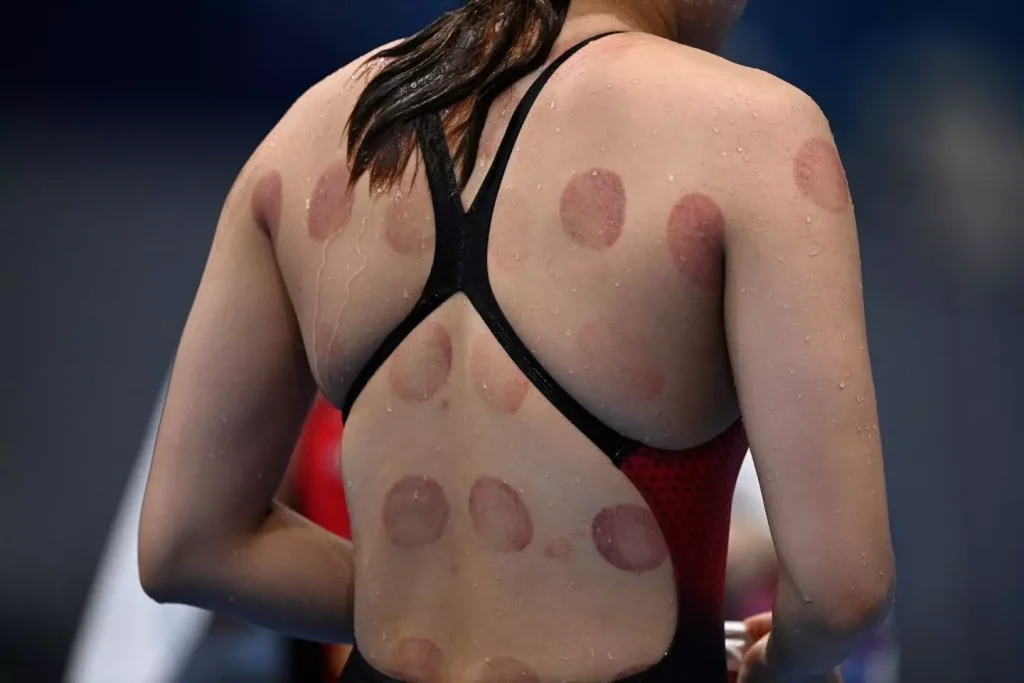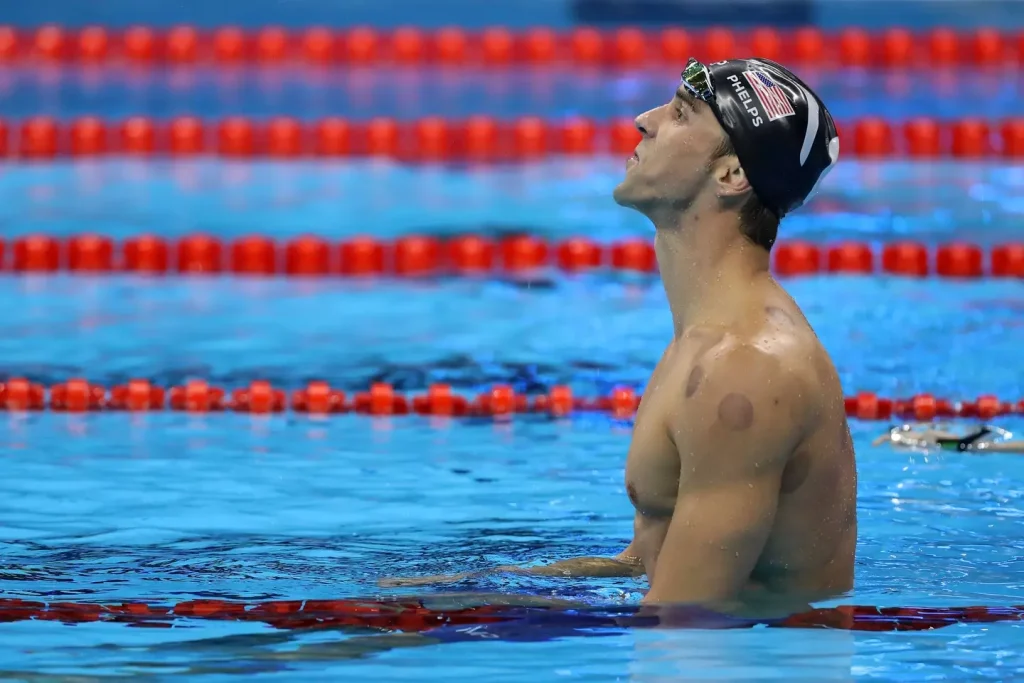Now that the Olympics are underway, all eyes are on the athletes.
Sports ranging from archery and shooting to gymnastics and athletics are currently being played all throughout Paris, France.
Swimming is one of the most popular sports to watch, and this year there are 854 competitors from 187 different nations.
However, you may have noticed a recurring motif among some of the swimmers: the peculiar dark red circles on their backs.

It turns out that the large spots are from cupping therapy, an ancient healing technique that involves placing cups on the skin to create suction and increase blood flow to the area. The unusual method is supposed to help with muscle recovery and is used as a type of deep tissue massage. Some athletes were spotted with cupping therapy bruises back at the Rio Olympics in 2016, and it appears to be still popular today. They may appear to have lost a fight with an octopus, but there is a very different explanation for the strange markings.

In 2016, gymnast Alexander Naddour told USA Today that the “secret” to his health was cupping.
“It’s been better than any money I’ve spent on anything else,” he continued.
Basketball player Kyle Singler has also lauded cupping therapy outside of the Games.
He has previously maintained, “The bruises do look more intense than they actually feel, but the benefit from it is really great.”
“You’re not necessarily getting the immediate response that you might want, but over time it does help with recovery and loosening tissue and stuff like that,” Singler went on to say to Sports Illustrated.
However, do professionals believe that cupping therapy is effective? The jury is still out, it seems.

Studies have suggested that cupping may offer some treatment for a variety of musculoskeletal and sports-related ailments, according to Harvard Health. However, this evidence’s quality was “limited.”
In another analysis from 2022, wet cupping was found to be more beneficial than dry cupping for lower back pain.
Even though people aren’t entirely sure how effective cupping is, the technique is generally regarded as safe to use, despite the fact that the bruises people acquire from it can be rather severe.
“The majority of professionals concur that cupping is safe. The pinch that occurs during skin suction is typically the only negative effect, according to Harvard Health, as long as the patients are okay with the circular discolorations that go away over a few days or weeks.
“Cupping rarely results in any major issues, though skin infections have been reported on occasion.”
Folks, there you have it.






